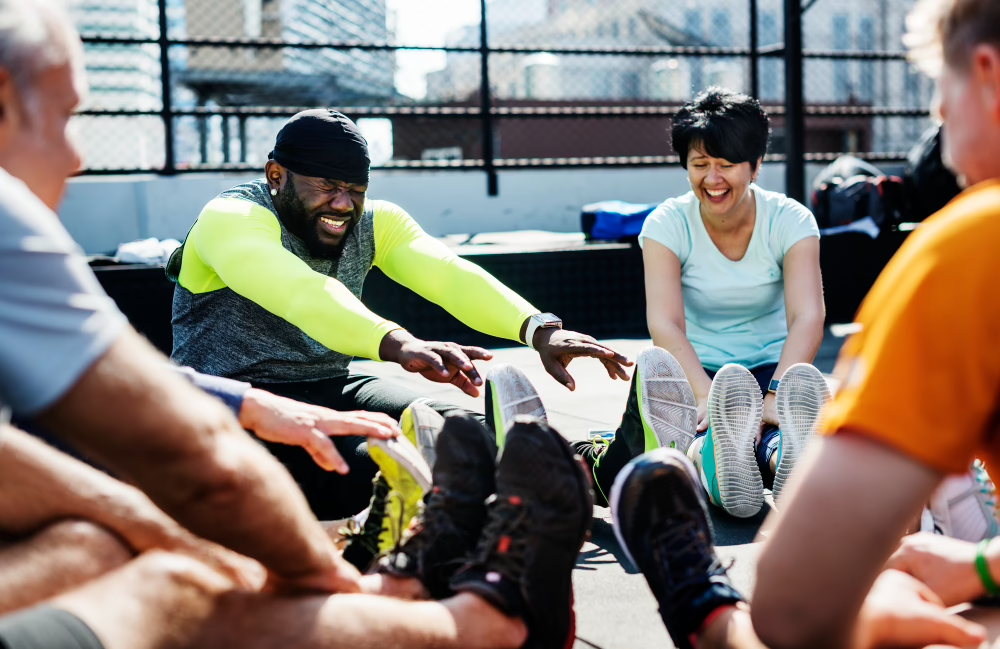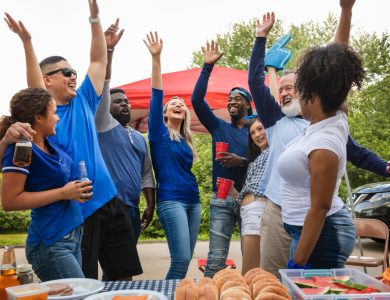9 Proven Steps for Organizing Fitness and Nutrition Events That Energize

Do you want to organize fitness and nutrition events that keep participants engaged and motivated? Many event planners face the challenge of balancing educational content with dynamic activities while managing complex logistics. Yet, the growing demand for health and fitness gatherings makes it crucial to master creating fitness and nutrition events that truly resonate. Here’s your solution: a comprehensive guide to planning wellness events that spark energy and drive lasting change.
Master the Art of Organizing Fitness and Nutrition Events That is Impactful
The success of your fitness event planning hinges on strategic organization and thoughtful execution. As a seasoned coordinator of nutrition workshop organizations and wellness gathering coordination, I’ve discovered that exceptional events blend structured learning with interactive experiences. From intimate health seminar planning sessions to large-scale fitness community-building initiatives, the principles remain consistent. Our proven framework, refined through years of developing nutrition education programs and active lifestyle events, will guide you through each critical phase of creation.
Your journey to crafting transformative wellness experiences starts here. Through these nine essential steps, you’ll learn to orchestrate events that not only educate but inspire lasting lifestyle changes.
Need more insight, this is a good read to help you: 9 Powerful Ideas for Wellness Events to Boost Mental and Physical Health
1. Define Your Event Vision and Goals
The foundation of any successful wellness event lies in establishing crystal-clear event vision planning from the start. When setting your wellness program objectives, think beyond surface-level metrics like attendance numbers. A mission statement might read: “To empower 100 local professionals with practical nutrition knowledge and sustainable fitness habits they can maintain for life.” This focused approach to fitness event goals drives every subsequent decision.
Your target audience analysis shapes your nutrition event strategy. A corporate wellness program aiming to boost employee health might focus on desk-friendly exercises and quick, healthy lunch preparations. Through precise event success metrics, you’ll track meaningful outcomes: participants who adopt new habits, measurable health improvements, or community connections formed. One client’s wellness gathering purpose centered on helping busy parents integrate healthy habits into family life. Within three months of organizing fitness and nutrition events for their community, 78% of attendees reported establishing consistent meal-prep routines and regular family exercise time. This success stemmed directly from clear, audience-focused goals established at the planning stage.
2. Build Your Event Dream Team
With your vision and goals established, the next crucial step is wellness event staffing – assembling professionals who share your passion for health transformation. Start your fitness expert recruitment by seeking certified instructors who bring both expertise and engaging personalities. One standout team included a former Olympic athlete turned wellness coach, whose practical approach to fitness resonated deeply with participants, leading to a 95% positive feedback rate.
Professional team building extends beyond hiring speakers and trainers. Successful nutrition speaker selection pairs registered dietitians with skilled communicators who can translate complex concepts into actionable steps. Your event volunteer coordination strategy should focus on individuals who embody your mission. When organizing fitness and nutrition events, a client’s health professional networking efforts yielded an unexpected gem: a local chef specializing in meal prep demonstrations partnered with a sports nutritionist, creating dynamic duo presentations that became event highlights. Through strategic event management assembly, every team member – from technical support to marketing specialists – contributes their unique expertise to create a seamless experience. Remember, your team’s enthusiasm is contagious; their energy directly influences participant engagement and event success.
3. Design Your Event Program
With your dream team assembled, it’s time to focus on wellness event scheduling that maximizes participant engagement. Effective fitness program planning balances high-energy activities with quieter learning moments. A recent corporate wellness event maintained peak engagement by alternating between 30-minute expert talks and 15-minute movement sessions, with strategic breaks that encouraged natural networking and reflection time.
Your nutrition session organization should follow the natural energy patterns of your participants. Through careful activity timeline creation and content development strategy, you’ll craft an experience that flows naturally. When organizing fitness and nutrition events, consider how one session builds upon another. A client’s workshop structure planning proved particularly effective: they opened with an energizing group workout, followed by a nutrition workshop where participants applied their new knowledge to create personalized meal plans. The day concluded with small-group coaching sessions that reinforced key learnings.
Event flow optimization requires both structure and flexibility. Build your timeline with precise transitions, but leave room for organic moments – those unexpected conversations and connections that often become event highlights. This balanced approach to program design keeps energy levels high while ensuring every participant gains maximum value from their experience.
Read Event Planning 101: 13 Ultimate Steps to Plan an Event That is Unforgettable for extensive how-to on how you can plan an event, generally.
4. Secure the Perfect Venue and Equipment
Your carefully crafted program deserves the perfect setting, making fitness venue selection a critical step in your event’s success. Start with a thorough event space requirements analysis – a 200-person wellness workshop recently transformed a spacious warehouse into distinct zones for workouts, nutrition demonstrations, and breakout sessions, allowing seamless transitions between activities while maintaining comfortable distancing.
Equipment logistics planning goes beyond simply listing needed items. A comprehensive facility assessment examines every detail, from power outlet locations to natural lighting patterns. Your venue safety evaluation must address both obvious and subtle factors: a client organizing fitness and nutrition events discovered their chosen space needed additional cooling units to maintain optimal temperature during high-intensity sessions. This early detection through space optimization strategy prevented potential discomfort and safety issues.
Technical setup planning becomes your blueprint for success. Map out equipment placement, ensuring proper spacing for movement activities and clear sightlines to presentation areas. Consider the flow of foot traffic, accessibility needs, and emergency exits. A recent wellness summit maximized their venue’s potential by creating designated “energy zones” – active areas for workouts, quieter spaces for nutrition talks, and relaxation corners for breaks. This thoughtful arrangement, combined with proper sound management, allowed multiple activities to run simultaneously without interference.
5. Develop Risk Management Protocols
With your venue secured, prioritizing wellness event safety becomes paramount to your event’s success. Effective fitness liability management starts with comprehensive health event protocols that protect both participants and staff. A recent wellness festival implemented a multi-layer safety guideline development process that included health screenings, activity-specific safety briefings, and clear communication channels – resulting in zero incidents across three days of high-energy programming.
When organizing fitness and nutrition events, your risk assessment strategy must anticipate various scenarios. One coordinator’s emergency response planning proved invaluable when a participant experienced mild dehydration during an outdoor summer session. Their well-trained team executed pre-established protocols swiftly, ensuring the participant received immediate care while maintaining the event flow for others.
Participant protection measures extend beyond physical safety. Create detailed documentation including liability waivers, health questionnaires, and incident reporting procedures. Consider environmental factors too – a recent indoor wellness expo included backup generators and alternative activity plans in their contingency strategy. Their preparation paid off when a brief power outage occurred; the event continued smoothly while backup systems were engaged. Remember, thorough risk management doesn’t dampen enthusiasm – it creates the secure foundation needed for participants to fully engage in your event’s transformative experiences.

6. Create Engaging Marketing Materials
With safety protocols in place, your wellness event promotion strategy becomes the bridge connecting your vision to your audience. Effective fitness marketing strategy starts with compelling event branding development that resonates with your target demographic. A boutique wellness studio’s recent campaign centered around “Transform Your Story” messaging, which sparked a 40% increase in early-bird registrations compared to their previous events.
When organizing fitness and nutrition events, your promotional content creation must strike the perfect balance between information and inspiration. A nutrition event advertising campaign recently captivated audiences by featuring short video testimonials from past participants alongside expert tips, generating significant social media buzz. Their registration system setup included automated reminder sequences that maintained excitement while reducing no-show rates to just 5%.
Your social media campaigns should tell a cohesive story across all platforms. Create a content calendar that builds anticipation through behind-the-scenes glimpses, expert introductions, and participant success stories. One wellness event doubled their attendance by partnering with local health influencers who shared authentic experiences from previous events. Remember to establish clear calls to action throughout your marketing materials, guiding potential participants from initial interest to confirmed registration. Strategic promotional partnerships with aligned businesses can amplify your reach while adding value through complementary offerings.
7. Plan the Nutrition Component
While your marketing campaigns build excitement, your healthy event catering must deliver an experience that aligns with your wellness message. A solid nutritional planning strategy goes beyond serving healthy options – it creates memorable learning opportunities. One wellness summit elevated its refreshment station organization by featuring color-coded meal stations that demonstrated portion control and balanced nutrition principles, resulting in participants naturally choosing more nutritious combinations.
When organizing fitness and nutrition events, comprehensive dietary accommodation management becomes crucial for inclusivity and safety. A recent corporate wellness day handled dietary restriction management through an innovative meal planning coordination system: participants received personalized QR codes linking to their meal preferences and restrictions, which streamlined service while ensuring everyone felt confident in their food choices. Their food safety protocols included live preparation stations where chefs educated participants about healthy cooking techniques while preparing their meals.
Expert meal planning coordination can transform standard breaks into educational moments. Strategic placement of hydration stations and thoughtful timing of nutritious snacks help maintain energy levels throughout your event. A wellness retreat’s approach to refreshments included “mindful eating corners” where participants could learn about nutrition while enjoying their meals, creating natural networking opportunities and deeper engagement with the event’s health-focused message.
8. Establish Event Flow and Experience
Building on your nutritional foundation, exceptional event experience design transforms ordinary moments into memorable interactions. Strategic participant journey mapping starts before attendees arrive – a recent wellness conference created digital welcome guides with interactive maps and personalized schedules, leading to a 98% positive rating for their check-in process optimization system.
When organizing fitness and nutrition events, thoughtful activity transition planning becomes essential for maintaining momentum. A corporate wellness day mastered flow management planning by creating “energy zones” – designated areas for high-intensity workouts, relaxation corners, and social networking spaces. Their engagement strategy development included mobile app-guided transitions between activities, which kept participants moving purposefully while preventing bottlenecks.
Attendee experience optimization relies on subtle yet important details. Strategic placement of inspiration walls with success stories generated natural photo opportunities, while themed networking breaks facilitated meaningful connections. One event’s creative approach to participant flow included color-coded pathways guiding attendees through different experience tracks, with clear signage that doubled as educational touchpoints. They also established “recharge stations” where participants could reflect on their learning while maintaining energy levels – a simple addition that significantly enhanced overall satisfaction scores.
9. Develop Evaluation and Follow-up Strategies
The final crucial step in your event journey focuses on event success measurement through comprehensive feedback collection systems. A wellness summit revolutionized their impact assessment planning by implementing real-time digital surveys throughout the event, allowing them to make immediate adjustments while collecting valuable data. Their participant follow-up strategy included personalized check-ins at 1-week, 1-month, and 3-month intervals, revealing that 85% of attendees maintained their new healthy habits.
When organizing fitness and nutrition events, sophisticated outcome evaluation methods prove essential for continuous improvement planning. A corporate wellness program’s success metrics tracking encompassed both quantitative data (attendance rates, participation levels) and qualitative feedback (behavioral changes, lifestyle improvements). Their multi-channel approach to gathering insights generated actionable data that shaped future event refinements.
Strategic post-event engagement keeps the wellness momentum going. One event’s follow-up campaign included weekly challenges through a private social media group, virtual check-in sessions with event speakers, and exclusive access to recorded content. This comprehensive approach to community building resulted in a 70% participation rate in their next event series. Remember, your evaluation strategy should measure not just immediate satisfaction, but long-term behavior change and community impact – the true markers of a successful wellness event.
FAQs on Organizing Fitness and Nutrition Events
- What’s the ideal timeline for planning a fitness and nutrition event?
Start planning at least 4-6 months for large events, and 2-3 months for smaller ones. Begin with venue selection and speaker recruitment (4-6 months out), followed by marketing campaigns (3-4 months), registration opening (2-3 months), and detailed logistics planning (1-2 months). Leave the final month for fine-tuning and contingency planning.
- How can I keep participants engaged throughout a full-day wellness event?
Mix high-energy activities with calmer sessions, scheduling intense workouts in the morning when energy peaks. Include “energizer breaks” every 90 minutes, featuring quick movement sessions or mindfulness exercises. Create interactive components like mini-challenges, group discussions, and hands-on demonstrations to maintain interest.
- What are the most important safety considerations for fitness events?
Prioritize proper health screening forms, signed waivers, and emergency response protocols. Ensure certified fitness professionals supervise all activities, maintain appropriate participant-to-instructor ratios, and provide clear safety briefings. Stock first aid supplies, have medical personnel on-site, and establish clear communication channels for emergencies.
- How do I create an inclusive event that accommodates different fitness levels and dietary needs?
Offer modified versions of all fitness activities, using trained instructors who can demonstrate variations. Implement a comprehensive dietary restriction tracking system, providing clear labeling and multiple food options. Create a welcoming atmosphere through inclusive language, accessible facilities, and diverse representation in your event team and materials.
Use tools like Eventbrite to streamline your event registration process and manage attendees efficiently. Design professional promotional materials for your fitness and nutrition event effortlessly with Canva.
Conclusion
Creating energizing fitness and nutrition events demands meticulous planning and passionate execution. Each step builds upon the last, forming a framework for transformative experiences that inspire lasting change. Your attention to detail, from initial vision to post-event follow-up, determines your event’s impact. Start your planning journey today, using these proven steps as your foundation while infusing your unique perspective to create memorable wellness experiences that truly resonate with your audience.



